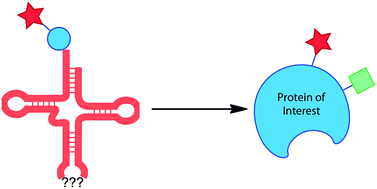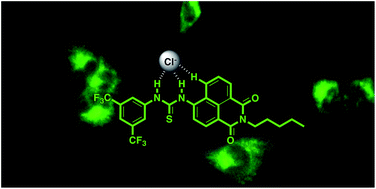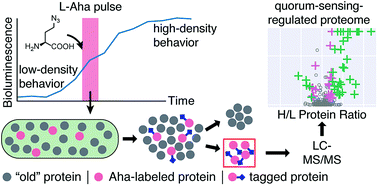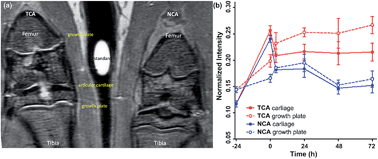Themed collection ISACS16: Challenges in Chemical Biology

Designing logical codon reassignment – Expanding the chemistry in biology
This review rationalizes the varied designs of systems for incorporation of UAAs into proteins via canonical codons.

Chem. Sci., 2015,6, 50-69
https://doi.org/10.1039/C4SC01534G
Fluorescent transmembrane anion transporters: shedding light on anionophoric activity in cells
A series of fluorescent anion transporters have been synthesised and their anion transport properties and interactions with cancer cell lines studied.

Chem. Sci., 2016,7, 5069-5077
https://doi.org/10.1039/C6SC01643J
Time-resolved proteomic analysis of quorum sensing in Vibrio harveyi
Bio-orthogonal non-canonical amino acid tagging allows time-resolved proteomic analysis of quorum sensing in Vibrio harveyi.

Chem. Sci., 2016,7, 1797-1806
https://doi.org/10.1039/C5SC03340C
Overcoming antibiotic resistance in Pseudomonas aeruginosa biofilms using glycopeptide dendrimers
Glycopeptide dendrimers targeting P. aeruginosa lectins yielded to crystallography and acted in synergy with tobramycin for biofilm inhibition and dispersal.

Chem. Sci., 2016,7, 166-182
https://doi.org/10.1039/C5SC03635F
Importance of dipole moments and ambient polarity for the conformation of Xaa–Pro moieties – a combined experimental and theoretical study
The trans : cis isomer ratio of Xaa–Pro bonds is significantly affected by the polarity of the environment. Computational and NMR spectroscopic studies revealed an intricate balance between polarity effects and interactions of carbonyl groups.

Chem. Sci., 2015,6, 6725-6730
https://doi.org/10.1039/C5SC02211H
Applications of the class II lanthipeptide protease LicP for sequence-specific, traceless peptide bond cleavage
The class II lanthipeptide protease LicP maturates through self-cleavage and enables sequence-specific, traceless peptide bond cleavage.

Chem. Sci., 2015,6, 6270-6279
https://doi.org/10.1039/C5SC02329G
In vivo visualization of osteoarthritic hypertrophic lesions
Cartilage-binding bimodal MRI and fluorescent probes were developed to monitor osteoarthritic damage in animal models over extended periods of time.

Chem. Sci., 2015,6, 6256-6261
https://doi.org/10.1039/C5SC01301A
Bridged bicyclic peptides as potential drug scaffolds: synthesis, structure, protein binding and stability
Diastereomeric norbornapeptides represent globular scaffolds with geometries determined by the chirality of amino acid residues and sharing structural features of β-turns and α-helices.

Chem. Sci., 2015,6, 5473-5490
https://doi.org/10.1039/C5SC01699A
Spontaneous head-to-tail cyclization of unprotected linear peptides with the KAHA ligation
The α-ketoacid–hydroxylamine (KAHA) ligation enables the direct cyclization of unprotected peptides upon cleavage, without coupling reagents or purification of precursors. We report the synthesis of a library of 24 cyclic peptides and a detailed mechanistic study.

Chem. Sci., 2015,6, 4889-4896
https://doi.org/10.1039/C5SC01774B
Excited-state hydrogen atom abstraction initiates the photochemistry of β-2′-deoxycytidine
H–D exchange experiments and quantum-chemical calculations elucidate the mechanism of photoinduced anomerisation and nucleobase loss reactions observed in β-2′-deoxycytidine.

Chem. Sci., 2015,6, 2035-2043
https://doi.org/10.1039/C4SC03761H
Harnessing selenocysteine reactivity for oxidative protein folding
Turbo-charged folding with selenium: targeted replacement of cysteines in proteins with selenocysteines is a valuable strategy for increasing the rates of oxidative protein folding, altering folding mechanisms, and rescuing kinetically trapped intermediates.

Chem. Sci., 2015,6, 322-325
https://doi.org/10.1039/C4SC02379J
Dissecting the reaction of Phase II metabolites of ibuprofen and other NSAIDS with human plasma protein
Blood-protein transacylation/glycosylation reactivity of glucuronides may distinguish beneficial (e.g., ibuprofen) and toxic (e.g., ibufenac) drugs.

Chem. Sci., 2014,5, 3789-3794
https://doi.org/10.1039/C4SC01329H
About this collection
We are delighted to present this web collection which contains selected contributions from the ISACS16: Challenges in Chemical Biology held in Zurich, Switzerland in June 2015. Delegates from ~25 countries around the world gathered to hear from leading researchers in this exciting field and now we have the opportunity to share with you exciting new research from a number of our plenary speakers and scientific committee members. All the articles are fully Open Access so anyone can read them. We hope you enjoy the collection.